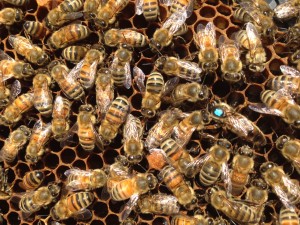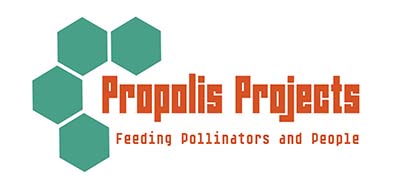Why are honeybees so important and what is happening to them?
National Honeybee Day is today: August 22, 2015.

Today is a day to celebrate our behind-the-scenes friends: the honeybees. You may see them as a nuisance or be fearful of them, but if you’ve spoken to any of your environmentalist friends or read up on environmental news, you most likely have heard about the plight of honeybees.
Do you know why they are so important? You may be relying on them more than you think. These tiny workers are responsible for many of the foods in your fridge and on your plate – vegetables, fruits, nuts, spices and even some oils! Honeybees are part of a group of animals called pollinators. Along with birds, butterflies, bats, and other animals (I’m now wondering if the “B” theme is intentional), honeybees fly from crop to crop cross pollinating our plants to help at least 30% of the world’s crops and 90% of our wild plants to thrive. Without bees to spread the seeds of our crops, many of our plants would die.
Unfortunately, global warming, pesticide use, parasites, and loss of viable habitats has caused the number of honeybee hives to drop to the lowest its ever been. Honeybees are near defenseless against these issues, and so it is up to us to protect them, consequently protecting our own food and livelihoods.
You can help. If you’re new to the plight of the honeybees, it’s as simple as spreading the word. Doing a simple Google search on “honeybee protection” and sharing what you find is one step closer to raising our honeybee hive populations. Whether you’re an advocate, a farmer, a government entity, or anyone, there are plenty of other ways to help. Check out the resources below to get started:
- Plant a pollinator garden
- Become a beekeeper or support local beekeepers (you can even buy local honey!)
- Encourage local authorities to use bee friendly plants in public space
- Educate yourself on honeybees – they aren’t out to get you like wasps (they’re vegetarians, unlike wasps)
- Don’t use chemicals or harmful pesticides to treat your home or garden and encourage others to do the same (there are natural alternatives)
- or simply share the information you learn about with a friend or two (you can even share this page!)
This list is not exhaustive, of course. Don’t be afraid to do your own research and maybe look into any bee protection efforts in your local area. We humans are the only ones who can help our honeybees repopulate, and though it may take a few years, there are many ways to do so. We just have to take the first step.
Sources:
Gabriela Chavarria, “Pollinator Conservation,” Renewable Resources Journal, Winter 1999-2000
